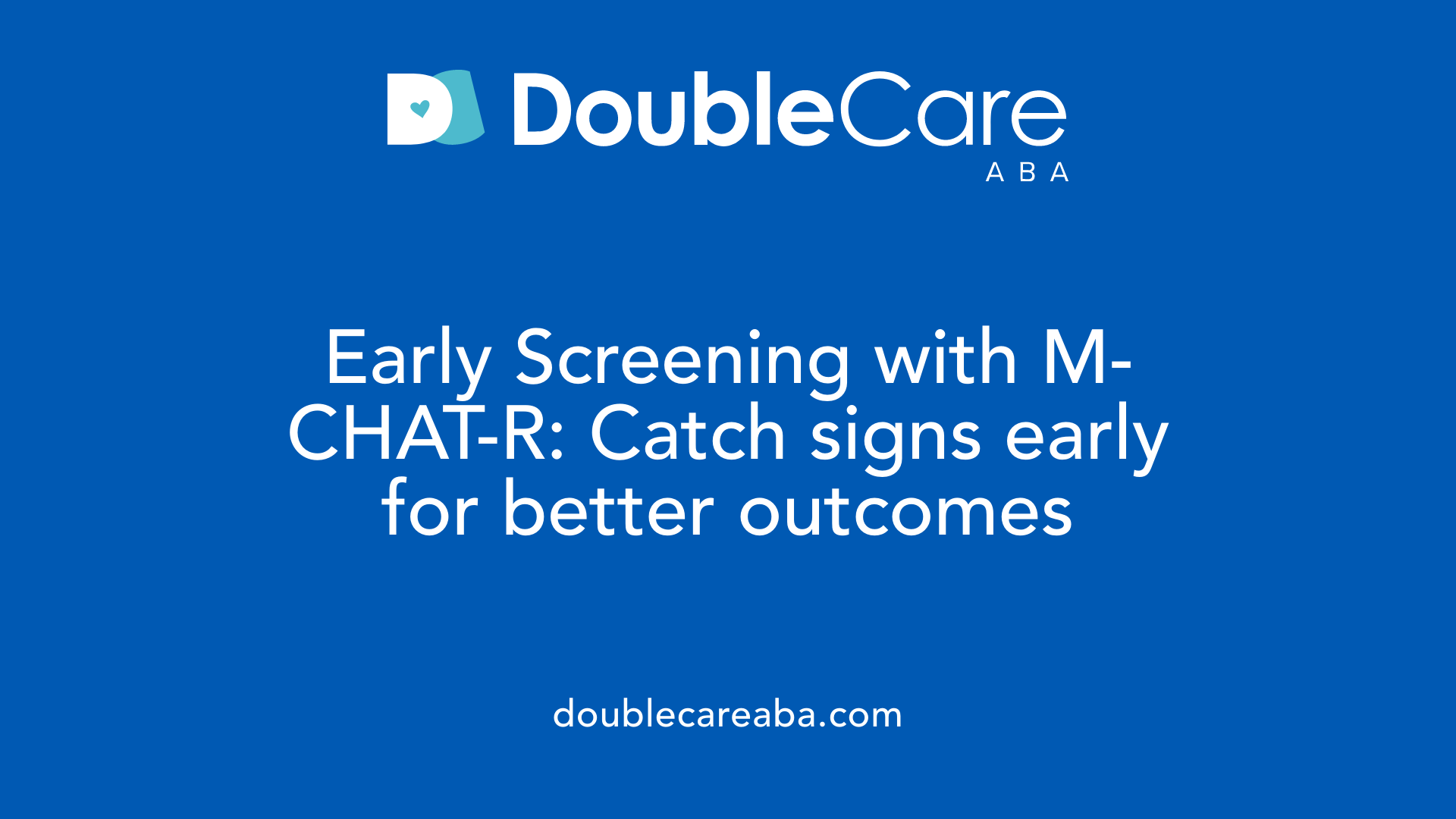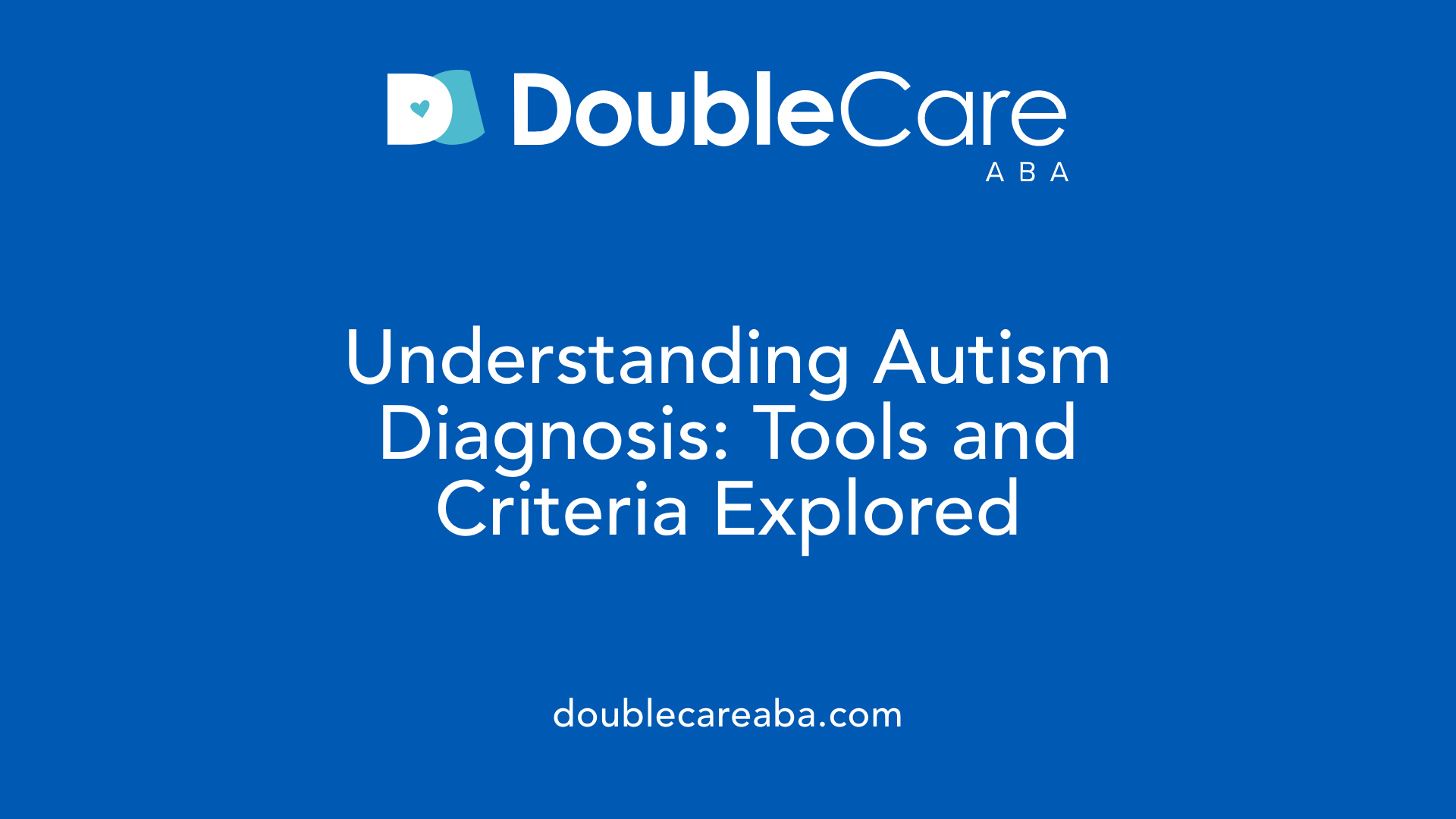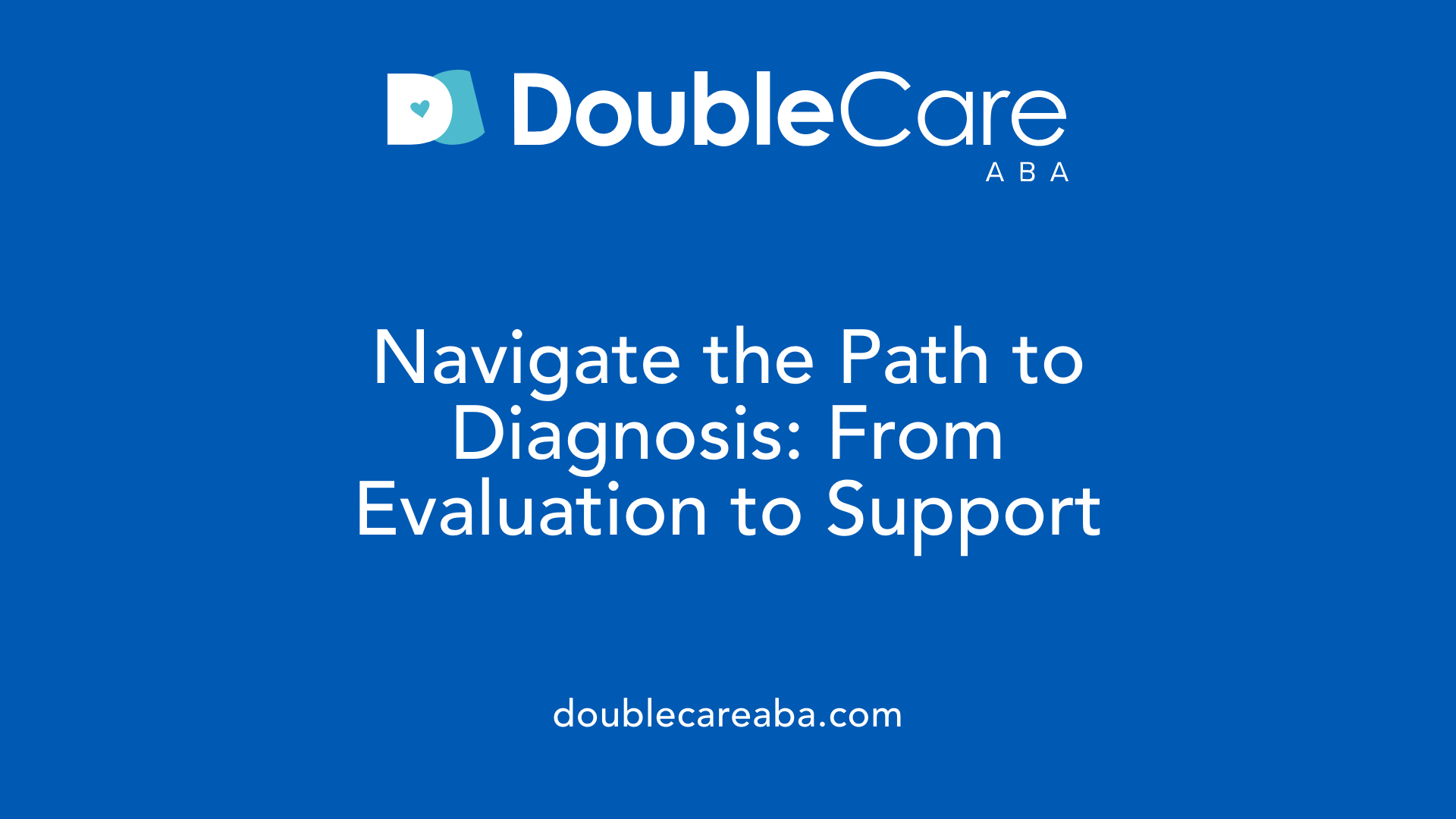Autism Evaluation
Understanding Autism Diagnosis: Processes, Tools, and Next Steps

A Comprehensive Guide to Autism Evaluation
Autism spectrum disorder (ASD) diagnosis involves a thorough process that combines screening, diagnostic evaluations, and ongoing support. Unlike many medical conditions, autism cannot be identified with a blood test or brain scan; instead, healthcare professionals rely on behavioral observations, developmental history, and standardized assessments. This article explores the methods and tools used in autism evaluation, what families can expect during the process, and the next steps following a diagnosis.
Screening and Early Identification of Autism

What is the primary screening tool for autism in toddlers?
The main tool used to screen for autism in young children is the Modified Checklist for Autism in Toddlers, Revised (M-CHAT-R). This is a free questionnaire that parents complete, including 20 questions about their child's behaviors. It assesses early signs related to social interaction, communication, and repetitive behaviors associated with autism spectrum disorder (ASD). Designed specifically for children between 16 and 30 months old, the M-CHAT-R is endorsed by the American Academy of Pediatrics. Scheduled typically at 18 and 24 months, it helps identify toddlers who may need further professional evaluation. While it is a valuable screening tool, it does not provide a diagnosis but signals when additional assessment is necessary.
What are common screening questionnaires for autism?
Healthcare providers and parents use several screening questionnaires to detect signs of autism in children and adolescents. Aside from the M-CHAT-R, other widely used tools include:
- Autism Spectrum Quotient (AQ) Test: A self-report questionnaire for individuals aged 16 and older, measuring traits associated with autism.
- Ages and Stages Questionnaire (ASQ): A broad developmental screening tool covering various skills, which can highlight delays warranting autism evaluation.
- Screening Tool for Autism in Toddlers and Young Children (STAT): An interactive assessment involving play-based activities that evaluate imitation and social play.
- Social Challenges Screening Questionnaire (SCSQ): Designed for school-aged children, parents, teachers, and professionals use it to identify social and behavioral symptoms related to ASD.
These tools, when yielding positive results, point to the need for comprehensive assessments conducted by healthcare specialists for accurate diagnosis.
How can someone prepare for an autism evaluation?
Preparing for an autism assessment involves collecting detailed information about the child's development and behaviors. Parents should track milestones, behaviors, and any concerns or challenges observed over time.
Utilizing screening tools such as the M-CHAT-R or ASQ before the appointment can offer insights into potential signs of autism. Many families also prepare by reviewing the criteria outlined in the DSM-5 for autism spectrum disorder, which highlights persistent social communication challenges, restricted interests, and repetitive behaviors.
Gathering records from pediatric visits, early intervention programs, or educational settings can support the assessment process. Parents should note questions or observations about their child's speech development, social interactions, sensory sensitivities, and emotional responses. When signs of autism are evident, consulting a specialist—such as a developmental pediatrician or psychologist—is an important step. During the evaluation, families should be ready to discuss their child's behavior during play, communication, and daily routines, providing as much detailed information as possible.
By preparing thoroughly, parents can help ensure a smooth assessment process that leads to accurate diagnosis and tailored support plans for their child.
Additional Information
Early screening and diagnosis are highly beneficial in autism, enabling timely intervention which can significantly improve outcomes. Routine screening at specific ages, especially around 18 and 24 months, encourages early detection. Healthcare providers follow guidelines from organizations like the CDC and the American Academy of Pediatrics, recommending developmental surveillance and screening at well-child visits.
While definitive diagnosis relies on comprehensive evaluations from a team of specialists, initial screening tools serve as essential first steps. They help distinguish children who might need further assessment and support to reach their developmental potential.
Exploring available screening options and preparing for assessments ensures that children at risk of autism receive support as early as possible. This proactive approach fosters better social, communication, and behavioral development, setting the foundation for a successful future.
The Diagnostic Process and Assessment Tools

What is the difference between screening tools and diagnostic assessments?
Screening tools are quick, standardized questionnaires designed to identify individuals who might have autism spectrum disorder (ASD). These tools, like the Modified Checklist for Autism in Toddlers (M-CHAT-R) and the Autism Spectrum Quotient (AQ), are not meant to provide a final diagnosis. Instead, they help determine whether further, more detailed evaluations are necessary.
Diagnostic assessments, on the other hand, involve comprehensive evaluations conducted by trained professionals such as psychologists, developmental pediatricians, or speech-language therapists. These assessments include in-depth interviews, behavioral observations, and the use of specialized tools to gather extensive information about developmental history, communication skills, social behaviors, and repetitive behaviors. The goal is to confirm whether a person meets the diagnostic criteria for ASD based on standardized manuals like the DSM-5 or ICD-11.
While screening is essential for early detection and deciding if further assessment is needed, diagnostic assessments are definitive and guide the development of intervention plans and support services.
What assessment tools and criteria are used in autism diagnosis?
Proper diagnosis of autism involves multiple tools and adherence to established criteria. Commonly, children are screened during routine medical visits using questionnaires such as the M-CHAT-R for toddlers, or the SACS-R and SACS-PR for children up to 60 months. For older children and adults, tools like the Autism Spectrum Quotient (AQ) and the RAADS-R are used.
Key diagnostic instruments include the Autism Diagnostic Observation Schedule (ADOS-2), the Autism Diagnostic Interview-Revised (ADI-R), and the Childhood Autism Rating Scale (CARS). These tools involve direct observation of behaviors, structured interviews with caregivers, and evaluations of communication, social interaction, and interests.
Diagnosis is primarily based on criteria from the DSM-5, which specify persistent deficits in social communication and interaction and restricted, repetitive patterns of behavior. The severity can be rated to determine the level of support needed.
Professionals interpret the results from these tools within the framework of these criteria to confirm an ASD diagnosis. Since no single test exists, the comprehensive evaluation integrates multiple sources of information.
Where can I find resources and research about autism evaluation tools?
Numerous organizations and research institutes provide extensive information about autism evaluation tools. Official resources include the CDC, which offers guidelines on screening and assessment schedules, and websites like Autism Speaks that review screening instruments such as the M-CHAT-R.
Specialized tools like the Vineland Adaptive Behavior Scales, Sensory Profile, and BASC-3 provide detailed insights into adaptive skills, sensory processing, and behavior, respectively. Academic journals in developmental psychology and neuropsychiatry publish current research on assessment methods.
Healthcare providers, including neurodevelopmental pediatricians and psychologists, often recommend specific evaluation tools based on a child's age and developmental presentation. They can also direct families to the latest research and the most suitable assessments tailored to individual needs.
By understanding these tools and criteria, families and professionals can ensure accurate diagnosis and timely access to support services.
| Assessment Tool | Age Group | Purpose | Source/Provider |
|---|---|---|---|
| M-CHAT-R | 16-30 months | Early screening questionnaire | Autism Speaks, CDC |
| SACS-R / SACS-PR | 12-60 months | Professional screening for young children | Autism CRC |
| AQ Test | 16+ years | Self-assessment for adolescents and adults | Online, validated by research |
| ADOS-2 | 12 months and up | Observation-based gold standard | Autism Diagnostic Observation Schedule |
| ADI-R | 3 years and older | Interview-based detailed developmental history | Autism Speaks, professional use |
| CARS | Toddlers to adults | Behavior rating scale for autism | Rating scale, used worldwide |
Understanding these tools enhances awareness about how autism is evaluated and diagnoses are confirmed, ultimately guiding appropriate intervention and support.
Steps to Obtain a Formal Autism Diagnosis

What are the steps involved in getting an official autism diagnosis for adults?
For adults seeking an autism diagnosis, the process begins with consulting a qualified healthcare professional, such as a psychologist or psychiatrist specialized in autism spectrum disorder (ASD). The clinician conducts a thorough assessment that often involves multiple appointments.
During these sessions, the professional reviews the individual’s developmental history, paying attention to early childhood behaviors and milestones. They may also utilize standardized questionnaires and conduct cognitive and behavioral evaluations aligned with DSM-5 criteria.
The assessment's goal is to gather comprehensive information to determine if the individual meets the criteria for ASD. Unlike children, adults may need to fill out self-assessment questionnaires, and the clinician may interview family members or close contacts for additional insights.
Once the evaluation is complete, the clinician provides a diagnosis if criteria are met. An official diagnosis allows adults to access various support services, therapeutic resources, legal protections under laws like the ADA, and accommodations at work or school.
Helpful resources, such as the Autism Speaks Adult Autism Diagnosis Toolkit, can guide individuals in finding qualified professionals and understanding the process better.
What does an autism evaluation involve for children?
Child autism evaluations are carried out through a multidisciplinary approach involving psychologists, developmental pediatricians, speech-language pathologists, and other specialists. The process starts with developmental monitoring and screening, where parents and caregivers observe and report on the child’s progress across various milestones.
Next, a comprehensive assessment is conducted, often including interviews with parents and caregivers about the child's developmental, medical, and social history. Direct observation is a crucial part of the evaluation, where specialists watch the child during play and structured activities.
Standardized tools such as the Autism Diagnostic Observation Schedule (ADOS) and the Autism Diagnostic Interview-Revised (ADI-R) are used to evaluate behaviors related to communication, social interaction, and repetitive behaviors.
Additionally, cognitive and language testing may be performed to identify strengths and challenges. The entire evaluation can take from 1.5 to over 4 hours, depending on the child's needs.
Following the assessment, the team interprets the collected information to determine whether the child meets DSM-5 criteria for ASD. This diagnosis guides subsequent intervention and support strategies.
What assessment tools and criteria are used in autism diagnosis?
Diagnosis of autism involves a combination of screening instruments, clinical observations, and adherence to diagnostic criteria. During routine check-ups, pediatricians often use screening questionnaires such as the Modified Checklist for Autism in Toddlers (M-CHAT) or the Ages and Stages Questionnaire (ASQ) to identify early signs.
If screening results suggest possible autism, a more detailed evaluation is recommended. This involves assessment tools like the Autism Diagnostic Observation Schedule (ADOS), which observes social and communication behaviors in naturalistic settings, and the Autism Diagnostic Interview-Revised (ADI-R), which gathers detailed developmental history from caregivers.
The American Psychiatric Association’s DSM-5 provides the diagnostic criteria, emphasizing persistent deficits in social communication and social interaction, along with restricted, repetitive patterns of behavior. The severity of symptoms can be specified, indicating the amount of support needed.
These tools and criteria work together to ensure an accurate and reliable diagnosis, considering that no single medical test, such as blood work, can confirm autism. Expertise from trained professionals is essential to interpret results correctly.
| Step/Tool | Description | Additional Notes |
|---|---|---|
| Developmental screening | Questionnaires like M-CHAT, ASQ for early risk detection | Performed in pediatric check-ups |
| Observational assessments | ADOS, CARS, STAT, Tele-ASD-Peds | Used for detailed behavior analysis |
| Developmental history review | Collecting reports from caregivers, teachers, and medical records | Helps track developmental progress |
| Diagnostic criteria | DSM-5, ICD-11 | Ensures diagnosis aligns with established standards |
| Multi-disciplinary evaluation | Involving psychologists, pediatricians, speech therapists | Provides comprehensive assessment |
Understanding these steps and using these structured tools ensure an accurate diagnosis, which is vital for accessing appropriate therapies and support.
Post-Diagnosis Support and Resources

What support and next steps are available after an autism diagnosis?
Receiving an autism diagnosis opens the door to a variety of support options that can significantly improve the quality of life for individuals and their families. One of the first steps is engaging in therapies tailored to the person's needs. These can include speech therapy to improve communication skills, occupational therapy to develop daily living skills, and behavioral interventions such as Applied Behavior Analysis (ABA). Educational support is also vital; many children benefit from individualized education programs (IEPs) that provide accommodations and specialized teaching strategies.
Community programs and social groups play a crucial role in fostering social skills and providing a sense of belonging. Support groups, whether local or online, allow families and individuals to share experiences, obtain advice, and gain emotional support. National organizations like Autism Speaks and local services through health authorities offer resources, guidance, and advocacy to help navigate available services.
Legal protections and accommodations are also important. Laws such as the Equality Act in the UK or the Americans with Disabilities Act (ADA) in the US protect individuals with autism from discrimination and ensure access to necessary support in school, workplaces, and public spaces. These include adjustments like additional time for tests, sensory-friendly environments, and workplace accommodations.
Early intervention is key. Starting services promptly after diagnosis can improve developmental outcomes and help individuals achieve greater independence. Regular evaluations and adjustments to support plans ensure that evolving needs are met.
Building a robust support network is essential. Healthcare professionals, educators, therapists, and family members should work collaboratively to develop and implement strategies tailored to the individual's strengths and challenges. This coordinated approach helps reinforce progress and fosters emotional well-being.
Ultimately, ongoing support nurtures development, enhances self-esteem, and promotes inclusion. It empowers autistic individuals to reach their full potential and live rewarding lives.
| Support Type | Examples | Benefits |
|---|---|---|
| Therapeutic Services | Speech therapy, occupational therapy, behavioral therapy | Improved communication, daily living skills, and behavior management |
| Educational Support | IEPs, special accommodations, classroom modifications | Better learning experiences and academic success |
| Community Programs | Support groups, social skills groups, recreational activities | Social inclusion and emotional support |
| Legal Protections | Disability accommodations, anti-discrimination laws | Equal rights and access to services |
| Family and Peer Support | Counseling, peer mentorship | Emotional resilience and shared understanding |
Why is support important for development and well-being?
Support systems are designed not just to address challenges but also to build on individual strengths. They help autistic individuals develop greater independence, self-confidence, and social integration.
Ongoing support can also mitigate mental health issues such as anxiety and depression, which are common among autistic people without adequate resources and understanding. Neurosupportive environments enable growth and provide the necessary tools for thriving.
In conclusion, post-diagnosis support encompasses a broad spectrum of services and protections that, when utilized effectively, can transform lives. Early, coordinated, and continuous support helps ensure that each individual can pursue fulfilling, meaningful lives with dignity and respect.
Moving Forward After Autism Evaluation
Autism evaluation is a comprehensive process that requires coordinated efforts by trained professionals using validated tools and criteria. While no single medical test can diagnose autism, early screening and in-depth assessments enable timely intervention and support. Families and individuals should anticipate a multi-step process involving development history review, behavioral observation, and standardized testing such as ADOS and ADI-R. After diagnosis, numerous resources, therapies, and community programs can assist in enhancing quality of life and development. Understanding these procedures equips families to navigate the journey with confidence, ensuring that individuals on the autism spectrum receive the support they need to thrive.
References
- Autism screening
- Screening for Autism Spectrum Disorder - CDC
- Screening & Diagnosis | Autism Society
- Autism Spectrum Disorder | Evaluation and Testing | Portland - OHSU
- Autism Evaluation Process | Children's Mercy
- Modified Checklist for Autism in Toddlers, Revised (M-CHAT-R™)
- Criteria and tools used in an autism assessment
- Clinical Screening for Autism Spectrum Disorder - CDC
- Autism tests - Embrace Autism
















